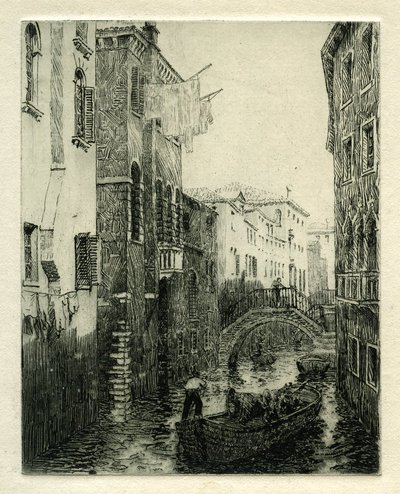Following Roger’s graduation and their marriage, Betty ended her studies at Radcliffe College, and the two enjoyed an extended honeymoon on the Massachusetts coast. They financed much of the trip with Roger’s winnings from the Rotch Prize, and spent most of their time painting, camping and reading at Cape Cod. Except for a brief stint in Fitchburg, the couple lived together in the Boston area for nearly seven years. They moved around the city several times before settling for about four years, from 1925 to 1929, in an apartment on 38 Joy Street on Beacon Hill near the State House. In a section of the same building where they lived, Betty opened and ran a book shop for about two years.
After graduating, Roger was initially offered a position at the architectural firm Stone & Webber, but chose to join the Bellows & Aldrich firm of Boston instead. He worked for Haynes & Mason out of Fitchburg, MA for a time, but soon returned to William T. Aldrich’s firm in Boston, where he worked on the museum addition to the Rhode Island School of Design in Providence.
Roger began working for Cram & Ferguson in 1925, a firm that specialized in gothic design, where he helped design the north transept for the Cathedral of St. John the Divine in New York City. Roger also began launching short treks into other disciplines and fields of study, taking particular interest for a while in Central American archaeology. As a result of his fascination with the subject, “Maya influence can be seen in the Provident Mutual Life Insurance Building in Philadelphia, irrational as it may seem.”
Roger continued to make art in his spare time, and produced many beautiful etchings of various buildings, rustic houses and landscapes. In 1923 he crafted a mask that was used in “A Night at an Inn,” a play that was produced in Keene. Likewise, in 1924 he provided an emblem for the Keene “Member Merchants’ Division, Chamber of Commerce,” free of charge.

Etching created by Roger Hayward, ca. 1920s. More images here

